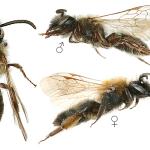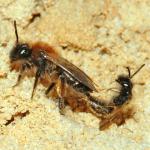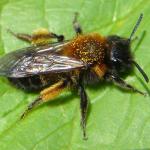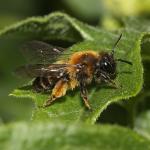Andrena picicornis (Kirby, 1802); Andrena pilosula (Kirby, 1802); Andrena gwynana (Kirby, 1802); Andrena proxima Smith, 1847; Andrena aestiva Smith, 1849; Andrena consimilis Smith, 1849.
Throughout much of the British Isles, though mainly coastal in Scotland and Ireland. It is also known from the Isle of Man and the Channel Islands. Very widely distributed in the western Palaearctic, from Fennoscandia south to Iberia and Corsica, and east to Siberia. It has also been reported from North Africa, Israel and Iran.
This species is not considered to be threatened.
Very catholic in its choice of habitats, occurring for example in open woodland and on calcareous grassland.
Bivoltine, the first brood flying from early March to May or June, the second brood from June to late August. Specimens of the first brood are usually locally abundant. However, second brood specimens are far less common and, indeed, males of this brood tend to be extremely elusive.
Nest burrows are rarely encountered and, in parts of Germany and eastern Europe, the species nests solitarily (Kocourek, 1966; Westrich, 1989). Brood cells have been located at the extreme depth of 101 cm (Malyshev, 1936).
See above forage species. Females of the second brood are strongly associated with bellflowers (Campanulaceae), particularly harebell (Campanula rotundifolia) and clustered bellflower (Campanula glomerata) (pers. obs.).
The species is a host of the cleptoparasite Nomada fabriciana (Linnaeus) (Perkins, 1919, 1924a, 1924b; Hallett, 1928, 1956; Spooner, 1931; Yarrow, 1941; Chambers, 1949; Westrich 1989). Specimens are occasionally stylopized, possibly by Stylops gwynanae, as in eastern Europe and Spain (Noskiewicz & Poluszynski, 1928).
2006





